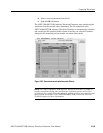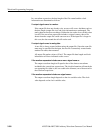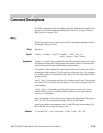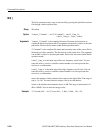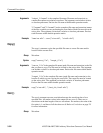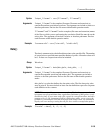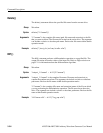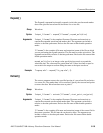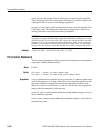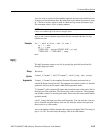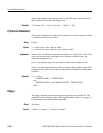
Command Descriptions
AWG710&AWG710B Arbitrary Waveform Generator User Manual 3-191
Code( )
The code() statement executes code conversion.
Group
Waveform
Syntax
"output_filename" = code("filename1", "code–conversion–table")
Arguments
"output_filename" is the complete file name (file name and extension) to
contain the code–converted waveform data. The argument can include a relative or
absolute path name. Enclose the file name within double quotation marks.
"filename1" is the complete (file name and extension) name of the source file for
the code conversion operation. The file is 0 1 pattern data. If the file is an analog
waveform file, this function reads as 1 if the data value is equal to or larger than
0.5, and 0 if the value is less than 0.5. The argument can include a relative or
absolute path name. Enclose the file name within double quotation marks.
"code–conversion–table" is the text file containing a code conversion table in
text form. You can use the files that are saved with the Code Conversion Table in
the waveform or pattern editor. You can also create those text file each line of
which composes of the following five fields delimited by comma (,):
PAST source, Current source, Next source, Past output, Output code
Refer to The Tools Menu on page 3-87 for the meaning of each field, and to the
Code Conversion Table Text Files on page F-12. The argument can include a
relative or absolute path name. Enclose the file name within double quotation
marks.
Example
"C1.WFM" = code("C0.WFM", "nrz.txt")
Conv( )
The conv() statement executes convolution between the waveform data of two
specified files. All marker values in the output file are set to 0.
Group
Waveform
Syntax
"output_filename" = conv("filename1", "filename2")



